Total War: Pharaoh is making huge changes to battles, from dynamic weather and terrain to armour degradation
Fights are slower paced, but promise more tactical nuance.
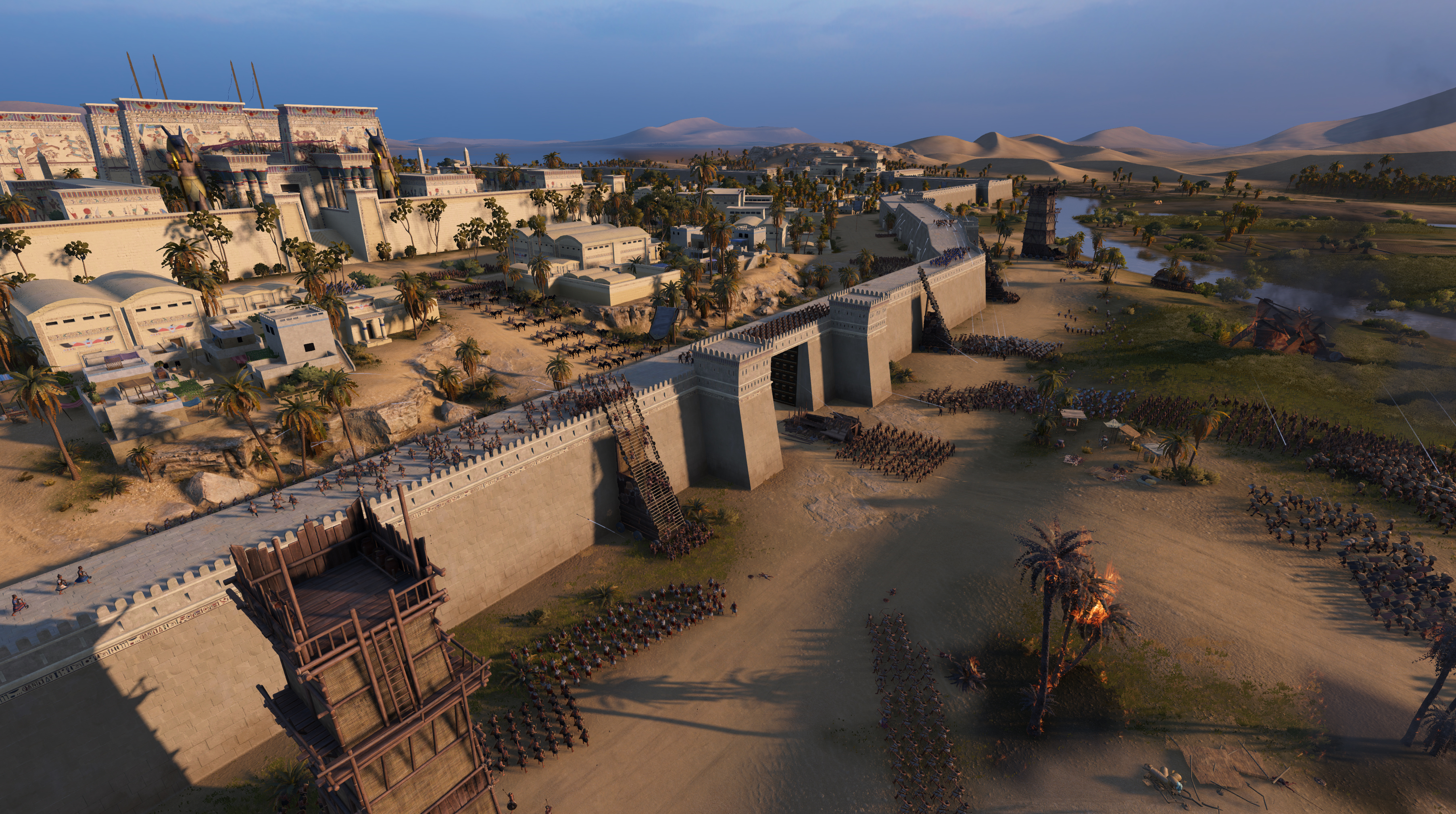
Total War has been revelling in fantasy and legends for a good long while now, but with Total War: Pharaoh the series returns to its roots, presenting a more grounded vision of history, albeit with some artistic licence. But even without magic, gods and superhuman leaders, Pharaoh still has some tricks up its sleeve.
Set during the Bronze Age collapse, Pharaoh sees Egypt dealing with myriad crises: the death of its ruler, threats from neighbours and incursions from the enigmatic Sea Peoples—an invading force of unknown origin. The tumultuous nature of the period is reflected in a stability system that throws more dangers at you as stability is lowered, from invasions to natural disasters. There's a theme of surviving against challenging odds, as you're battered by human adversaries and the natural world.
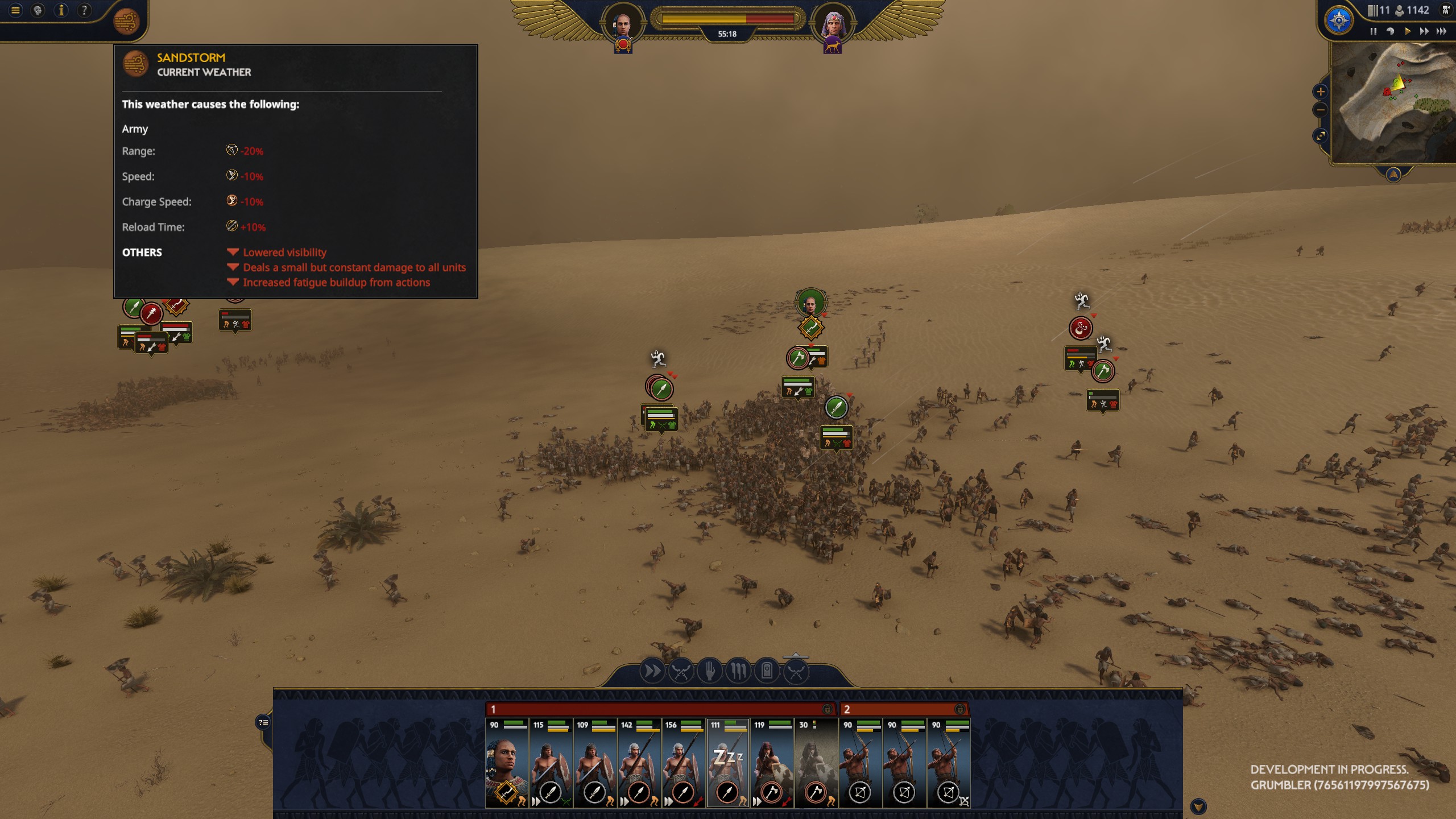
"We obviously dipped our toes in the Bronze Age with [A Total War Saga: Troy]," says creative director Maya Georgieva. "And after solving some of the issues, we were ready to go big and really be able to represent the whole period on a larger scale, and this is what we're doing with Pharaoh."
We found a better tone of voice by making a fully historical title that is not diluted or looking for multiple representations.
Maya Georgieva
Georgieva hopes that one day Total War will cover the "whole historical timeline", from ancient history to the modern age. To that end, the tone of Pharaoh is a departure from Troy's, which drew as much from epic poem's like Homer's Iliad as it did from history. "We found a better tone of voice by making a fully historical title that is not diluted or looking for multiple representations. So our intent here is to basically represent Egypt as it was and create a game that does justice and creates a living, breathing representation of the world and Egypt at that time."
Egyptian history is well-trodden territory in games and beyond, but as lead battle designer Milcho Vasilev notes, "Most people, when they think about Egypt, they think either about building the pyramids, which is more like the beginning of the Bronze Age, or the later parts of Ptolemaic Egypt, where it has a lot of Greek influence." The end of the Bronze Age is a less familiar setting. That's where the legacy system comes in.
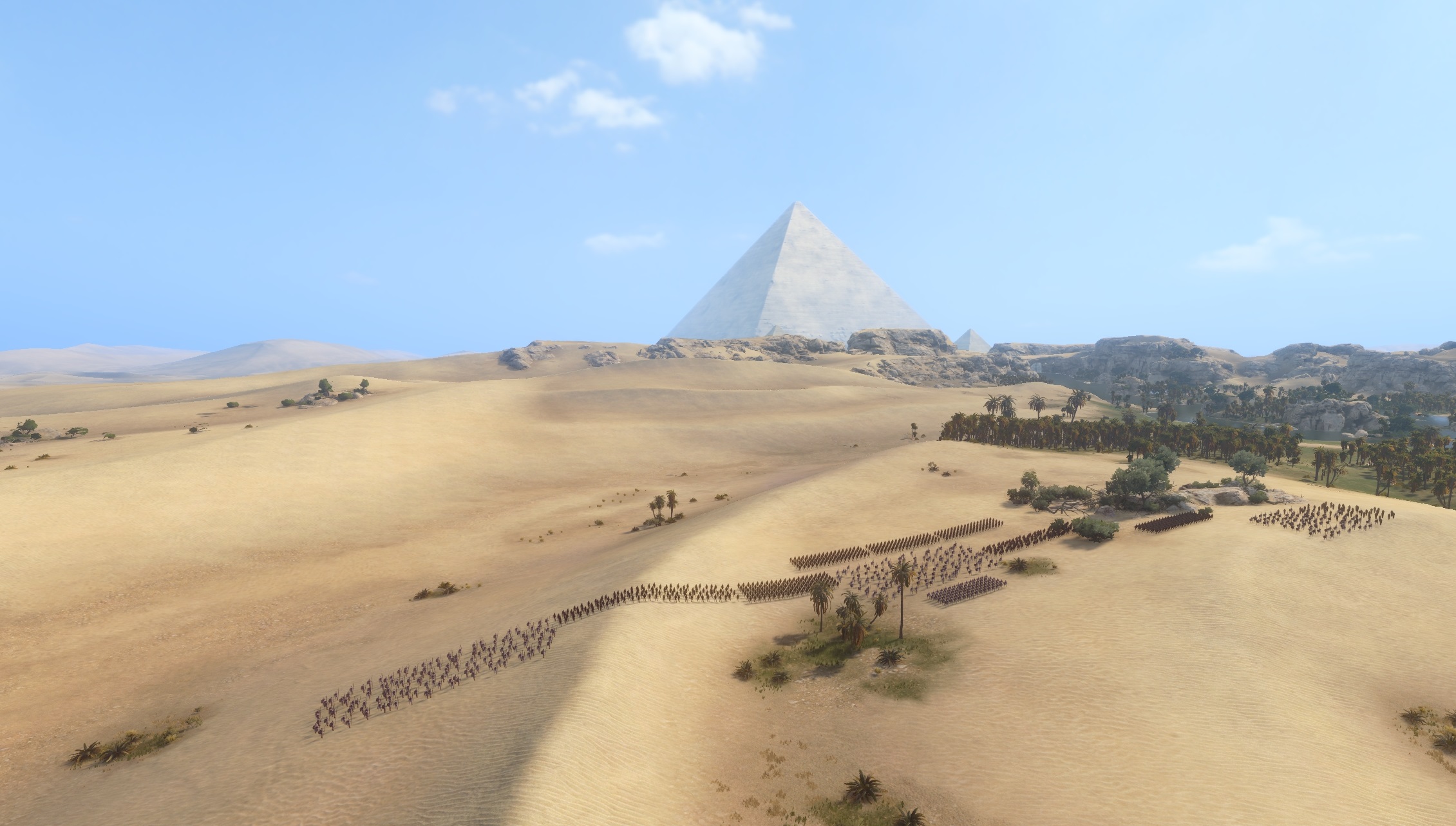
By the late Bronze Age, Egypt already had an illustrious history, which is reflected by legacies that players can select to help reinforce their chosen playstyle. By emulating another historical ruler, you can become a better builder, conqueror, diplomat or a master of economics, with each legacy offering different mechanics—though Creative Assembly Sofia isn't ready to spill the beans on them quite yet. This also allows the team to represent a variety of historical figures even though the game is focused on a specific era.
Egypt is not the sole playable empire in this conflict. While the Sea Peoples are an AI-controlled adversary, the Canaanites and Hittites will also be yours to lead—each with two faction leaders, while Egypt boasts four. Only Egypt was playable in the preview build, however, where I was able to fight a trio of battles that showcased some significant changes that have been included in the real-time portion of Pharaoh.
The biggest gaming news, reviews and hardware deals
Keep up to date with the most important stories and the best deals, as picked by the PC Gamer team.
With Troy, Creative Assembly Sofia tried to spice up battles by reflecting the weight of armour and introducing special environmental features; this is the case in Pharaoh, too. Heavier units will tire out faster, and they'll also get bogged down in mud, less able to fight in these unfavourable conditions than their lighter counterparts.
Getting down and dirty
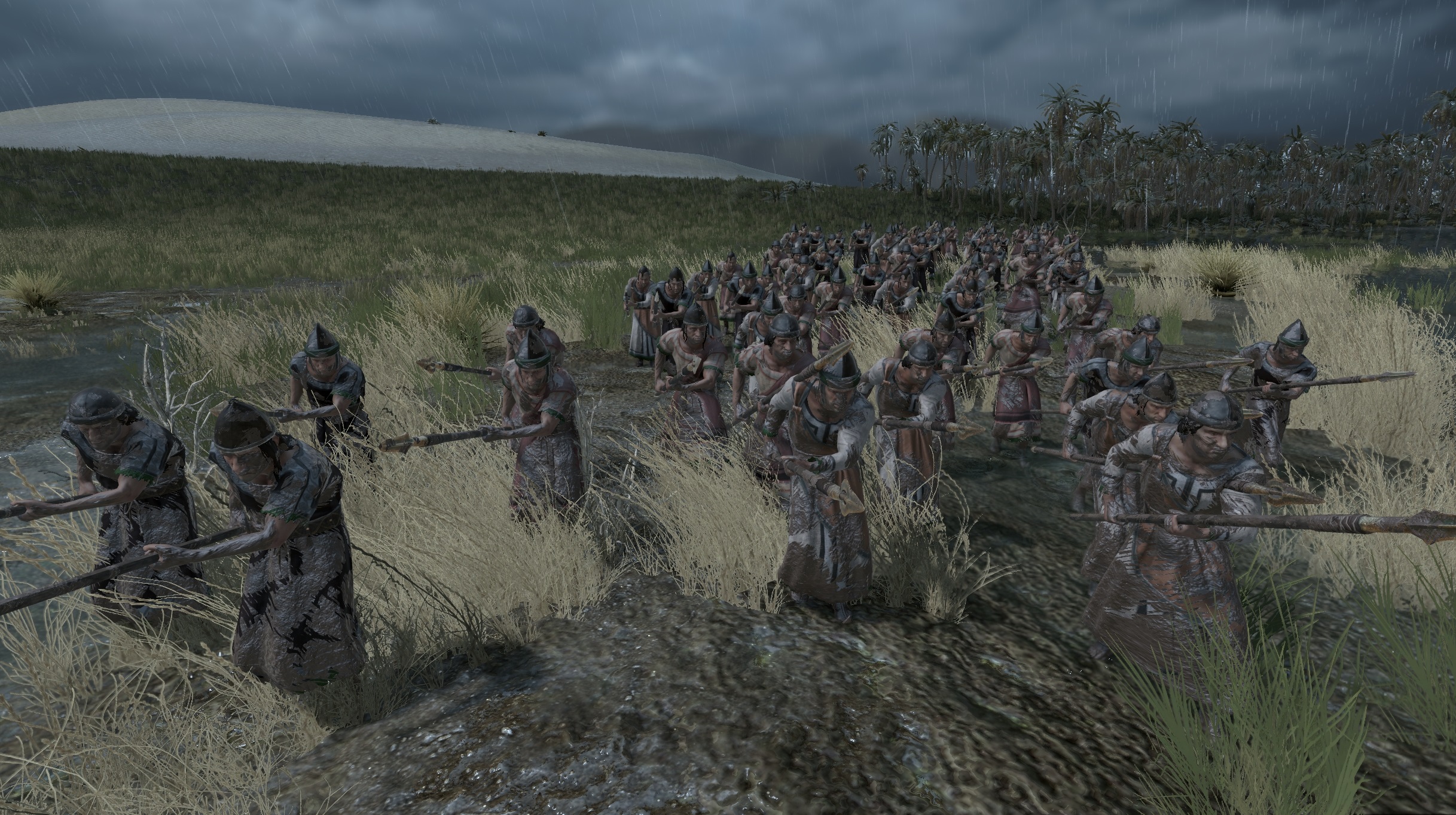
Where Pharaoh differs is in the relationship between weather and terrain, both of which are dynamic. "You can start with certain parts of the ground being completely dry, but the weather might change to rain, which will bring its own effects," says Vasilev. "But they're not going to be just stat effects and that sort of thing; they're going to actively impact the terrain itself and maybe create more patches of mud and so on. Or if the weather might turn into a sandstorm and actually dry out the patches of mud and turn them into sand, and so on. This whole thing offers a lot more variety in battles."
In my first fight, where our forces collided amid large sand dunes, we ended up stuck in a nasty sandstorm. This obscures your vision, obviously, lowering the range of your troops, but it also makes them more fatigued and does a small amount of constant damage. Not conditions you really want to be fighting in. Heavy rain, meanwhile, also affects range and accuracy, as well as making everything a bit muddier.
With Pharaoh, the impact of fire has also been enhanced. It's dynamic now, spreading across the battlefield, destroying buildings, burning trees to ash and, unsurprisingly, killing off soldiers. The effects of fire are further enhanced by the temperature. When you're fighting in sweltering conditions, fire is going to be a lot more common and dangerous.
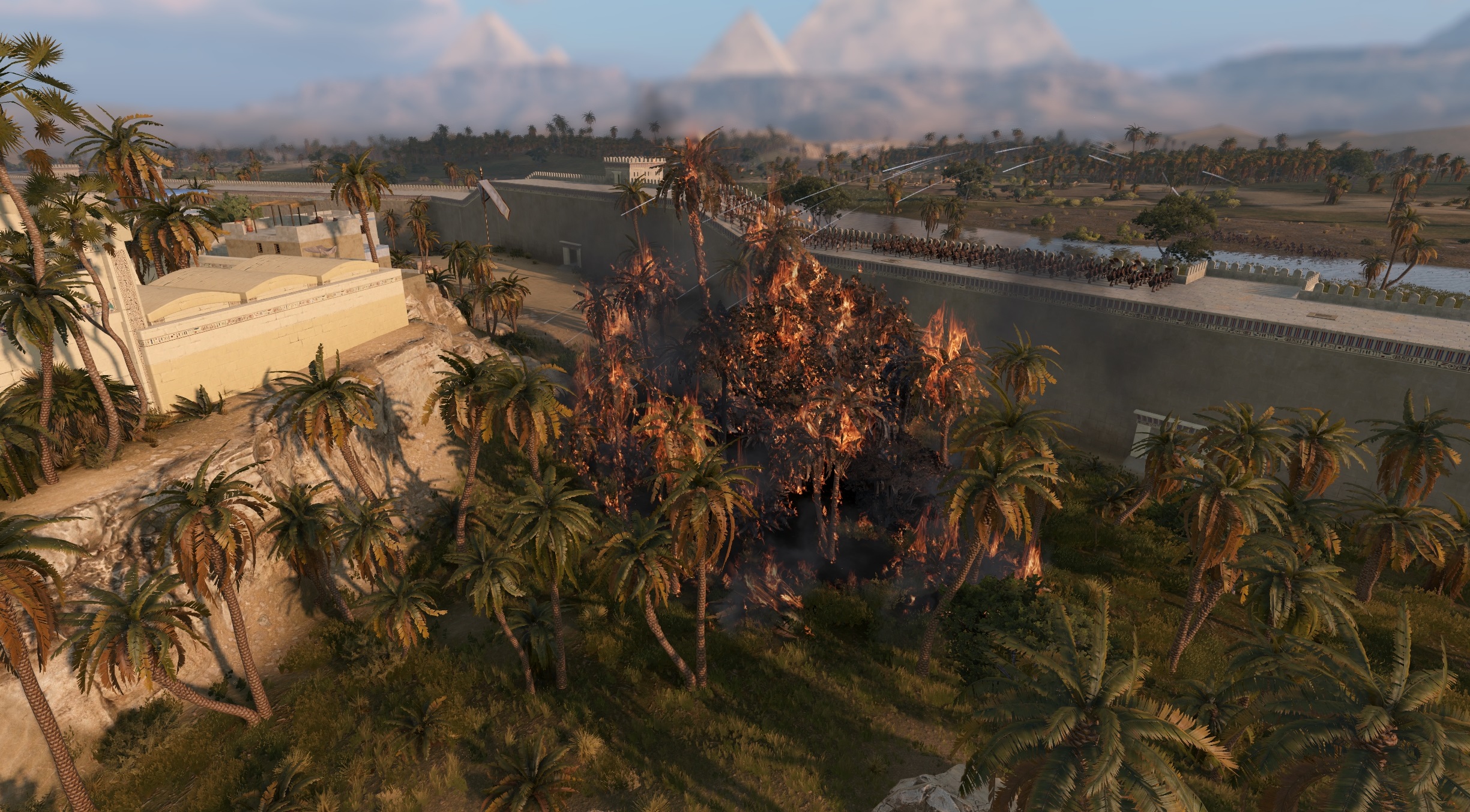
Weather and terrain aren't just obstacles, however; they can be opportunities. "In previous Total Wars you've had that prediction, whether you should start battling in rain or in dry weather, and everybody just chooses dry weather," says Georgieva. "But in this case, you could actually make an informed choice and creatively exploit that. Let's say you're expecting a storm or a sandstorm and you know that this diminishes the effectiveness of archers and you're facing a heavily archer-based army, you'd probably select that sandstorm and wait out for it. So basically keep distance up until the storm approaches and then capitalise on the changes of conditions."
Weather and terrain aren't just obstacles.
In my second battle, set amid a thunderstorm, I started very close to a swampy, muddy pool. I took advantage of this by drawing heavy enemy units into the mud, where my lighter troops, backed up by some javelineers, were able to pick off what initially seemed like a stronger force. During my third fight, meanwhile, I defended my city from a siege by setting fire to the area beneath my walls, so the invaders would have to walk through the flames to get to their ladders.
You'll be able to recruit units tailored to these weather and terrain conditions. There are, for example, desert-dwelling tribes whose warriors are adept at fighting in sandstorms, so if you go out and conquer the regions they inhabit, you'll be able to add them to your armies and stop worrying about the weather.
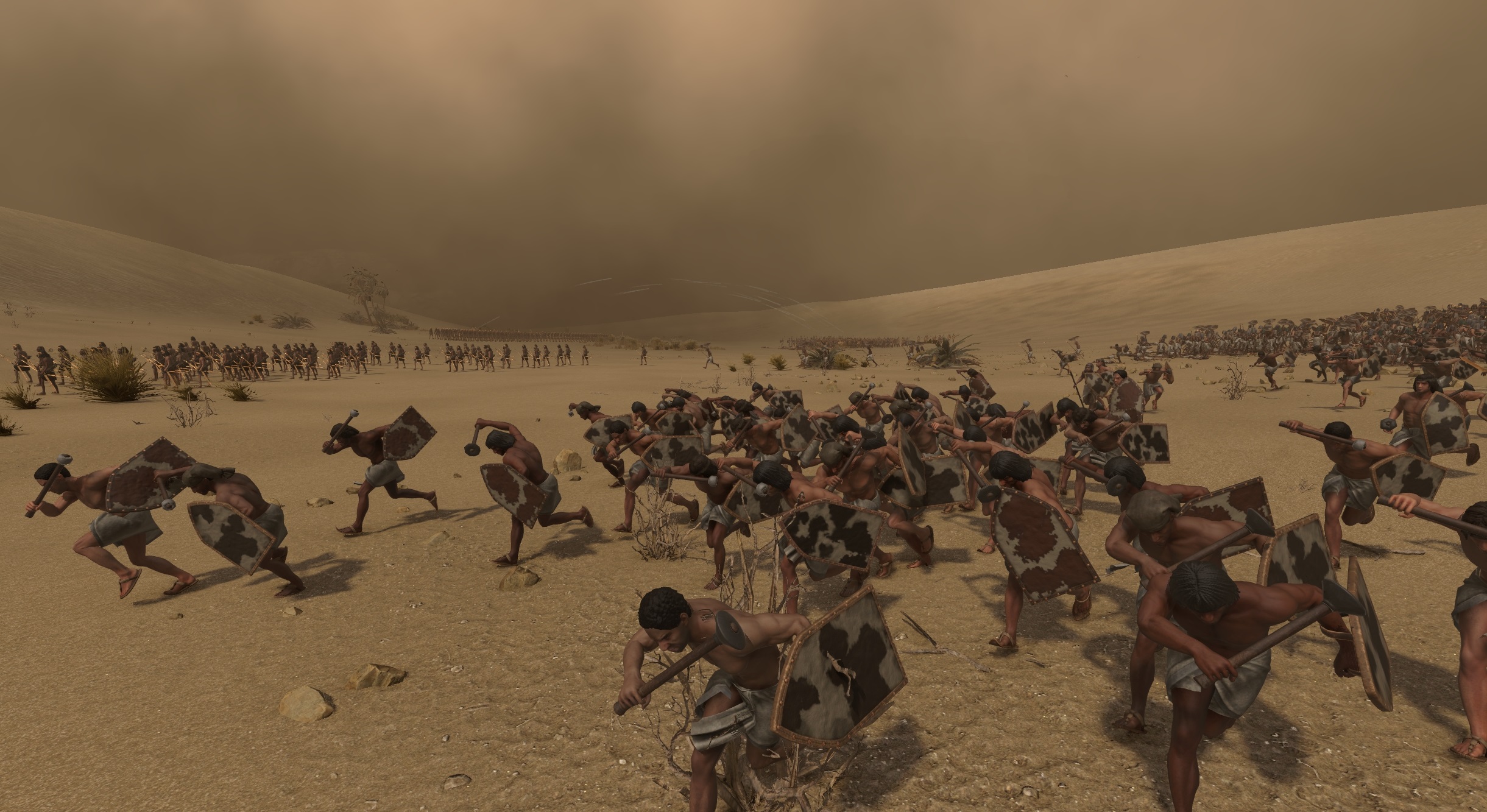
Even armour features some dynamism this time around. As armies clash and your troops start taking a walloping, their armour will degrade, meaning that they'll take more damage from confrontations. So while Creative Assembly Sofia has tried to slow down the pace of these fights—"They are at least twice as slow as they are in Troy," says Vasilev—there are so many tactical features and quirks that I was too busy reacting to all the dynamic changes to notice the change in pace.
I'm optimistic about the scraps, then, but I've yet to see the campaign in action. I'm intrigued, though. As well as features like stability and legacies, there are some interesting custom options that allow you to randomise starting positions, the impact of natural disasters and lots of other things, which should be a boon for replayability. Hopefully I'll be able to take it for a spin before it launches this October.

Fraser is the UK online editor and has actually met The Internet in person. With over a decade of experience, he's been around the block a few times, serving as a freelancer, news editor and prolific reviewer. Strategy games have been a 30-year-long obsession, from tiny RTSs to sprawling political sims, and he never turns down the chance to rave about Total War or Crusader Kings. He's also been known to set up shop in the latest MMO and likes to wind down with an endlessly deep, systemic RPG. These days, when he's not editing, he can usually be found writing features that are 1,000 words too long or talking about his dog.

